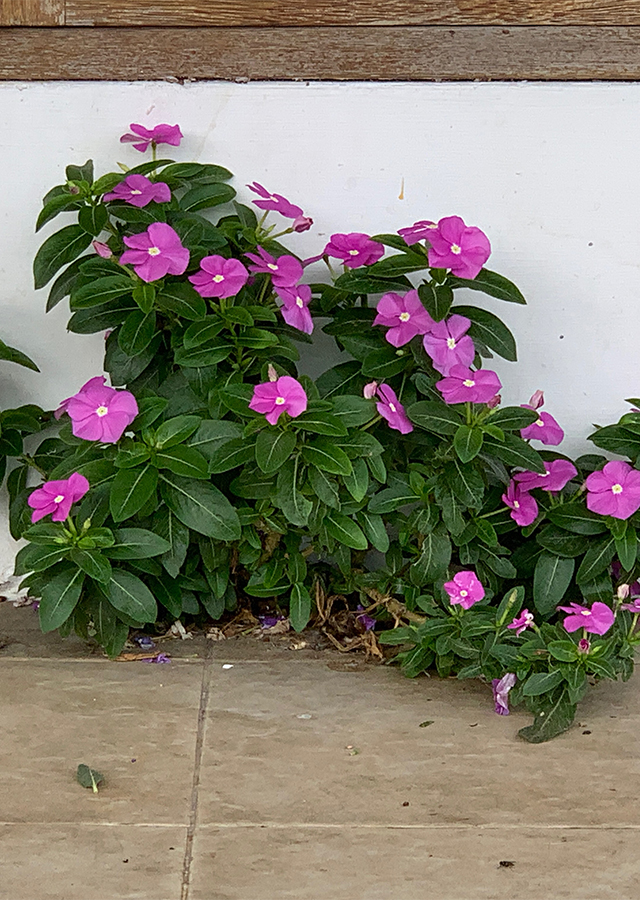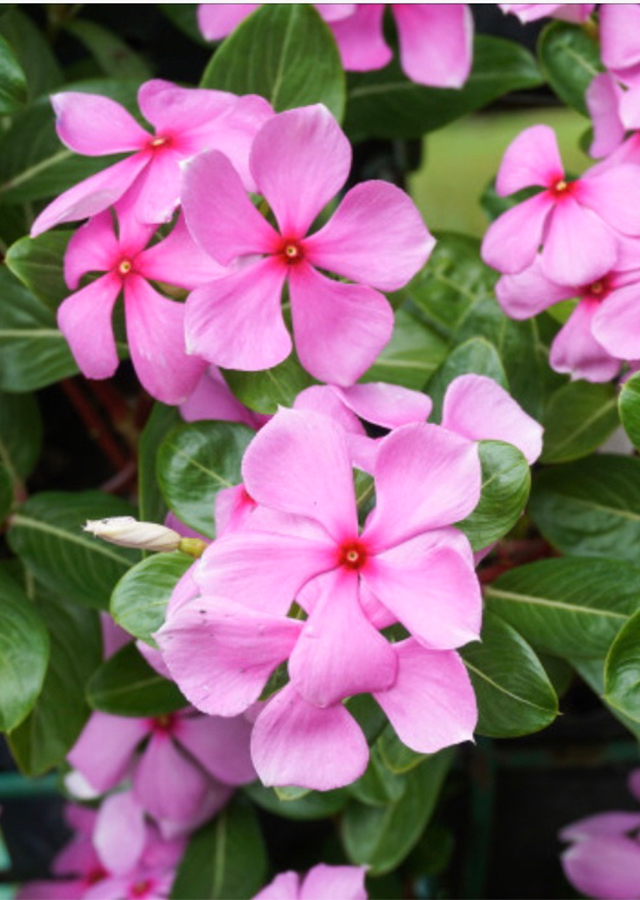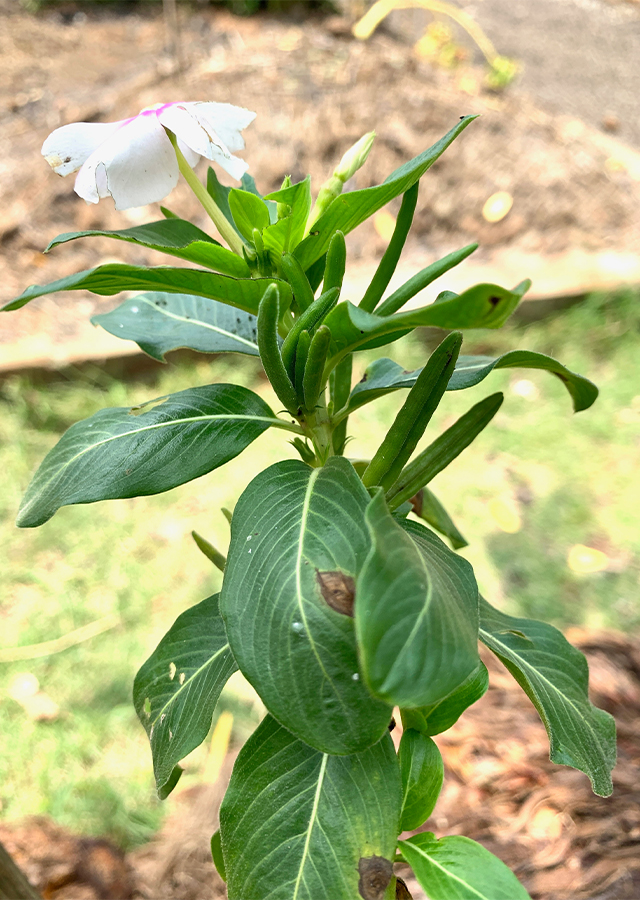Traditional Herbs from Catharanthus roseus
asthma
- Boil 15-20 g of periwinkle roots in 2-3 glasses of water until boiling.
- Drink 1 glass per day.
diabetes_melitus
- Boil 3 periwinkle leaves and 15 periwinkle flower florets, with 4 glasses of water until boiling until 1.5 glasses remain.
- Cool then strain.
- Drink 2 times a day (morning and evening).
What is Catharanthus roseus Looks like??



Parts of Catharanthus roseus that could be used
- Leaves", "Flowers", "Roots", "All Parts of the Plant
Catharanthus roseus Distribution
The periwinkle originates from Madagascar (Central America) and has been cultivated as an ornamental plant throughout tropical and subtropical regions. Tapak dara is also known as a medicinal plant that has many benefits. In Europe it has been used as a diabetes medicine since the 3rd century. In Hawaii it is used to stop bleeding. The alkaloid compounds in periwinkle function in treating hypertension.Agroecology of Catharanthus roseus
It grows well in the lowlands up to an altitude of 800 m above sea level. Likes open, sunny to partially shaded areas with tropical climates with fertile, moist, well-drained soil and a soil pH between 5.4-5.8.
Morphology of Catharanthus roseus
- Taproot.
- Woody stem (base), white gummy, round stem shape.
- Single leaves, opposite, leaf veins pinnate. Shape elongated, inverted egg-ovate to oval. Base and tip of leaf pointed, leaf edge flat, the mother of the leaf spine is rather thick and fleshy.
- Compound flowers, shaped like a trumpet, consist of five petals, the surface is smooth, white, purple, pink or white with red in the middle, the flower corolla tube is as long as 22-30 mm.
- Fruit\u00a0hairy, hanging, contains many black seeds.
Cultivation of Catharanthus roseus
- Propagation by seeds, stem cuttings, roots.
- Seeds are sown in polybags, after the seedlings are 15-20 cm tall, move them to the field or pots.
- Harvest leaves/flowers aged 4 months.
Catharanthus roseus, more details :
Chemical Content of Catharanthus roseusCatharantihine, leurosine, sulphate, lochnerine, tetrahydroaltonine, vinrosidine, vinleurosine, vindoline, vindolinin, vincristine, vinblastine, reserpine, and serpentine.
Benefits of Catharanthus roseus
Treats leukemia, hypertension, diabetes, dysentery, anemia, fever, cough, asthma, bronchitis, constipation, boils/ulcers, burns, mumps, breast and uterine cancer, digestive tract, canker sores, irregular menstruation, kidney stones, trembling hands , stomach ulcers.
Simplisia of Catharanthus roseus
- Pick fresh tapak dara leaves then wash thoroughly with running water.
- Dry by airing at room temperature until dry.
- After dry, puree with a blender.
- Store in an airtight container." ]
Another Facts for Catharanthus roseus :
Synonym of Catharanthus roseus
Ammocallis rosea (L.) Small, Lochnera rosea (L.) Rchb. ex Spach, Pervinca rosea (L.) Gaterau�
Habitus of Catharanthus roseus
Bush. Annual shrub, reaching 30-100 cm high
Habitat of Catharanthus roseus
- Riverside", "Forest", "Coast", "Roadside", "Shrub Area", "Grassland
No comments:
Post a Comment